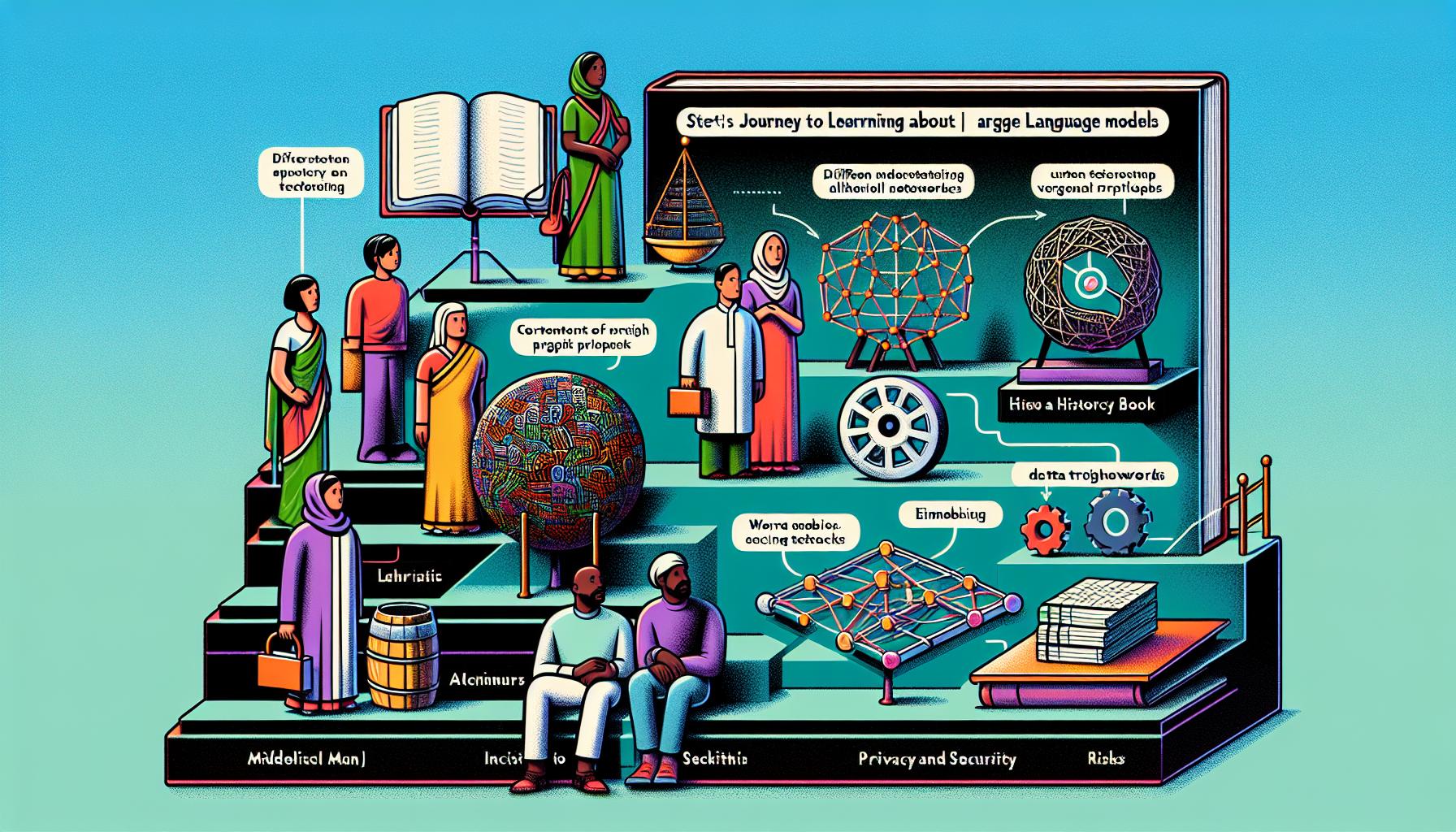How to Learn About LLMs in 2024: An Essential Guide on Large Language Models

Introduction
Large Language Models (LLMs) have revolutionized numerous fields, including law, art, and programming. If you are new to LLMs and want to structure your learning effectively, here's a comprehensive guide based on personal experiences and curated free resources.
1. Start with the History
Although it might seem tedious, understanding the history of LLMs is crucial. Knowledge of why LLMs were created, the motivations and challenges behind their development, and the innovators who played significant roles will provide essential context. Reliable sources like Wikipedia and YouTube can serve as valuable starting points.
Notable Breakthroughs in the History of LLMs
The history of LLMs is rich with groundbreaking innovations. Some of the most notable breakthroughs include:
- Neural Networks: The introduction of neural networks laid the foundation for modern LLMs, enabling machines to learn from data in a way that mimics human brain function.
- Transformer Architecture: The development of transformer architecture, as seen in models like BERT and GPT, revolutionized natural language processing by allowing for more efficient handling of sequential data.
- Attention Mechanism: The attention mechanism improved the ability of models to focus on relevant parts of the input data, enhancing their accuracy and performance.
- Generative Pre-trained Transformers (GPT): The release of GPT-3 marked a significant leap in the capabilities of LLMs, showcasing their ability to generate human-like text based on prompts.
2. Understand the Science
Grasping the underlying science behind LLMs is the next step. This includes learning about the algorithms, neural networks, and statistical models that form the backbone of LLMs. Deep dives into scientific papers and educational videos can be particularly helpful.
3. Fast-Forward to the Present
To appreciate the current landscape, explore the latest advancements and applications of LLMs in various fields. This will help you understand how these models are being integrated into real-world applications and how they enhance different professional practices.
4. Master Prompting Techniques
Effective interaction with LLMs largely depends on how you prompt them. Different prompts can yield vastly different results, so learning the nuances of creating effective prompts is important to harness the full potential of these models.
Effect of Different Prompting Techniques
The way you prompt an LLM can significantly influence its output. Here are some key aspects of prompting techniques:
- Specificity: Providing detailed prompts can lead to more accurate and relevant responses, while vague prompts may yield less useful answers.
- Context: Including contextual information in your prompts helps the model understand the background, leading to more coherent and contextually appropriate outputs.
- Examples: Using examples in your prompts can guide the model to produce responses that closely match the desired format or content.
- Iterative Refinement: Iteratively refining your prompts based on the model's responses can help you achieve the best possible output.
5. Learn About Embeddings and Vector Databases
Embeddings are a way to represent words or phrases in a vector space, which allows LLMs to understand and generate human language more effectively. Familiarize yourself with how embeddings work and their role in the functionality of LLMs.
6. Play Around with Data Frameworks
Practical hands-on experience is invaluable. Engage with various data frameworks to understand how data is handled, processed, and integrated within LLMs. This experimentation will solidify your theoretical knowledge with practical skills.
7. Learn About Privacy and Security Risks
Given the vast amount of data processed by LLMs, understanding the potential privacy and security risks associated with these models is essential. This knowledge will help you use LLMs responsibly and ethically.
Privacy and Security Risks in LLMs
When using LLMs, be aware of the following privacy and security risks:
- Data Leakage: LLMs may inadvertently reveal sensitive information from the training data if not properly managed.
- Bias and Fairness: LLMs can inherit biases present in the training data, leading to unfair or discriminatory outputs. It is important to implement methods for identifying and mitigating these biases.
- Adversarial Attacks: Malicious actors can exploit vulnerabilities in LLMs to manipulate their outputs or extract sensitive information. Implementing robust security measures is crucial to mitigate these risks.
- Privacy of User Data: Ensuring the privacy of user data is paramount, especially when interacting with LLMs in applications like chatbots and virtual assistants. Employing encryption and strict access controls can help protect user data.
Conclusion
Learning about LLMs in 2024 involves a combination of historical knowledge, scientific understanding, practical experimentation, and awareness of security and ethical considerations. By following this structured approach, you can effectively navigate the complexities of LLMs and leverage their capabilities for various applications.

 ™
™

